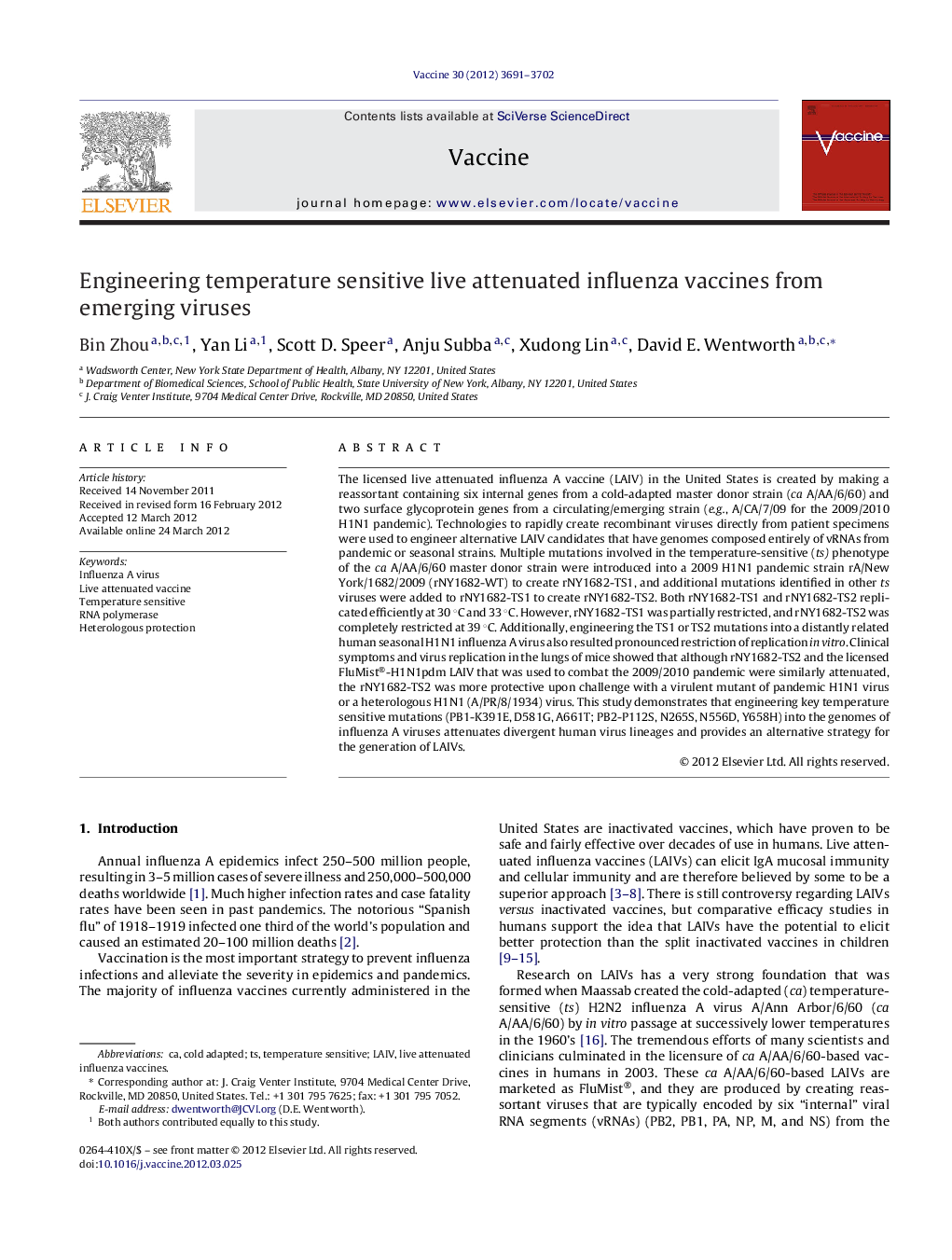| کد مقاله | کد نشریه | سال انتشار | مقاله انگلیسی | نسخه تمام متن |
|---|---|---|---|---|
| 2402631 | 1102827 | 2012 | 12 صفحه PDF | دانلود رایگان |

The licensed live attenuated influenza A vaccine (LAIV) in the United States is created by making a reassortant containing six internal genes from a cold-adapted master donor strain (ca A/AA/6/60) and two surface glycoprotein genes from a circulating/emerging strain (e.g., A/CA/7/09 for the 2009/2010 H1N1 pandemic). Technologies to rapidly create recombinant viruses directly from patient specimens were used to engineer alternative LAIV candidates that have genomes composed entirely of vRNAs from pandemic or seasonal strains. Multiple mutations involved in the temperature-sensitive (ts) phenotype of the ca A/AA/6/60 master donor strain were introduced into a 2009 H1N1 pandemic strain rA/New York/1682/2009 (rNY1682-WT) to create rNY1682-TS1, and additional mutations identified in other ts viruses were added to rNY1682-TS1 to create rNY1682-TS2. Both rNY1682-TS1 and rNY1682-TS2 replicated efficiently at 30 °C and 33 °C. However, rNY1682-TS1 was partially restricted, and rNY1682-TS2 was completely restricted at 39 °C. Additionally, engineering the TS1 or TS2 mutations into a distantly related human seasonal H1N1 influenza A virus also resulted pronounced restriction of replication in vitro. Clinical symptoms and virus replication in the lungs of mice showed that although rNY1682-TS2 and the licensed FluMist®-H1N1pdm LAIV that was used to combat the 2009/2010 pandemic were similarly attenuated, the rNY1682-TS2 was more protective upon challenge with a virulent mutant of pandemic H1N1 virus or a heterologous H1N1 (A/PR/8/1934) virus. This study demonstrates that engineering key temperature sensitive mutations (PB1-K391E, D581G, A661T; PB2-P112S, N265S, N556D, Y658H) into the genomes of influenza A viruses attenuates divergent human virus lineages and provides an alternative strategy for the generation of LAIVs.
► Attenuating mutations engineered into multiple vRNAs of pandemic influenza viruses.
► Critical mutations from three ts viruses required to attenuate 2009 pandemic H1N1.
► Recombinant LAIV candidate genome replication restricted at elevated temperatures.
► Rationally designed LAIV more effective in mice than 6:2 reassortant currently used.
Journal: Vaccine - Volume 30, Issue 24, 21 May 2012, Pages 3691–3702